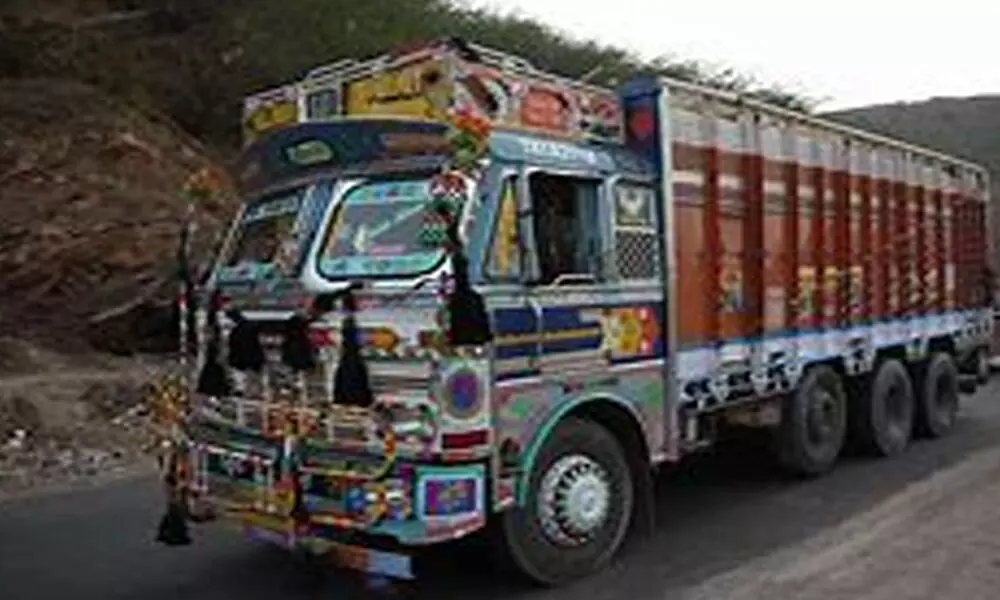Lockdown hits India's transport sector hard
The railway is looking at a deficit of a whopping Rs 90,000 crore due to lockdown
image for illustrative purpose

The transportation system, especially public transportation, is considered the vein of the economy because all the other economic sectors are directly or indirectly associated with it. It provides mobility and access to essential and recreational opportunities. India boasts of having the largest and most diverse transport sectors in the world, which caters to the needs of nearly 1.3 billion people.
A large proportion of the public assistance recipients do not own a car and rely on public mobility services. Besides, the tourism industry is mostly dependent on public transportation services. The total contribution from travel and tourism to India's economy was 247.37 billion US dollars during 2018.
Public transportation services are one of the worst-affected economic sectors by Covid-19. The sector has experienced a demand-cum-supply shock. There is an unprecedented reduction in travel and commercial activities. Consequently, the impacts have surged over transport activities more severely. In India, the Gross Value Addition (GVA) from the transport sector accounts for 4.8 per cent, where a significant proportion is covered by road transportation (3.1 per cent) followed by the railways (0.8 per cent), airways (0.2 per cent), and waterways (0.1 per cent). Besides these, the motor transport records more than 1.3 million employment in 2017.
India boasts for the world's largest rail network extended over 123236 km, with 9141 freight trains and 13452 passenger trains transporting 23 million travellers daily from 7349 stations. The rail transport network of India is also recognized as one of the largest single management railway systems in the world.
The railways' projections estimated that the lockdown might result in a drastic fall in the estimated total earnings up to Rs 1.48 lakh crore for FY2020-21, increasing the earnings gap by Rs 63,000 crore. If it is added with the earlier resource gap of over Rs 28,000 crore for FY20, the national transporter is looking at a deficit of a whopping Rs 90,000 crore.
The International Air Transport Association (IATA) predicts that India is expected to be the third-largest air passenger (international and domestic) market in the world by 2024. However, the situation has already changed with the coronavirus 2019 outbreak. The IATA forecast is likely to be incomplete, and it will take much more time, reaching the third position in the air passenger market. Only the "Lifeline Udan" flights were operated by the Ministry of Civil Aviation (GoI) to transport essential medical cargo to remote parts of the country to support India's fight against Covid-19. As a result, the Indian aviation industry is expected to suffer 24 thousand crore rupees' revenue loss due to the pandemic.
Similarly, public road transport services have been limited to essential services only as a part of the outbreak strategies. The ban on operations during lockdown has caused significant financial losses to operators. In a study by UITP and World Bank Group (2020) it is predicted that, when services resume, demand may not return to pre-lockdown levels.The report says that around 20 lakh people have lost their employment. The Bus & Car Operators Confederation of India worries that approximately equal numbers are on the verge of losing their jobs as private bus and tourist taxi operators have seized the services due to the lockdown.
The 57-day nationwide lockdown due to Covid-19 resulted in a sharp 13 per cent downfall in toll collections and remittances, according to Crisil research.The whole world is rethinking mobility alternatives and trying to abstain from community transmission. A massive shift has been noticed from transportation base activities to virtual communication.
GetMyBoat, the world's largest boat rental and water is on pace to send over one million people boating before the end of 2021. Perhaps with our long coastline and meandering rivers, the answer could be in a safe boating system to transport millions of passengers along the coast in fair weather at a fair cost.Electric cycles, bikes, cars, buses, boats, flying cars and even planes could perhaps solve the transportation problems and the environment.
According to the World Economic Forum, Artificial intelligence (AI) can help you travel safely after Covid-19.In the wake of Covid-19, public transport operators can enable social distancing by spreading out commutes and putting on extra buses.Artificial intelligence can crunch huge amounts of data and quickly design alternative routes and schedules as passengers' needs change.Mapping routes onto demographic data, such as income levels for different areas, ensures public transport serves those who need it most.

